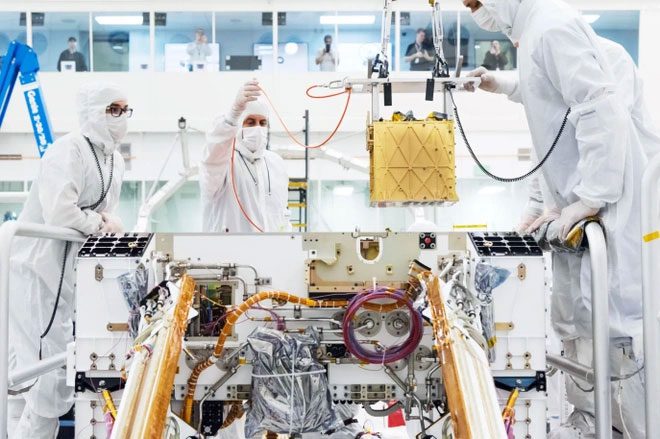MOXIE – a device the size of a toaster integrated into NASA’s Perseverance rover – has successfully completed its mission to generate oxygen on Mars during a series of experiments.
In research reported by The Guardian on August 31, scientists stated that since its inception in April 2021, MOXIE has been able to produce oxygen in seven test runs. This tool has accomplished its mission under various atmospheric conditions, including both day and night, and across different seasons on Mars.
In each test, MOXIE achieved its goal of producing 6 grams of oxygen per hour, equivalent to the rate of a small tree on Earth.
“The only thing we haven’t proven yet is whether MOXIE can operate at dawn or dusk when temperatures change significantly,” said Michael Hecht, the principal investigator for the MOXIE mission at the Haystack Observatory, Massachusetts Institute of Technology (MIT).

A member of NASA’s Mars 2020 project installs MOXIE onto the Perseverance frame. MOXIE absorbs CO2 from the atmosphere, processes it into oxygen, and distributes it like a tree. (Photo: NASA).
MOXIE, a compact version, is integrated with the Perseverance rover as part of NASA’s Mars exploration mission. The current version is designed to operate for short periods, turning on and off after each run. The successful operation of this system will pave the way for larger devices that can operate continuously for thousands of hours.
Scientists hope that when operating at maximum capacity, MOXIE could generate enough oxygen to support human presence on Mars and provide fuel for rockets returning humans to Earth.
“To support human missions on Mars, we bring many things from Earth. But oxygen? We can produce that right here,” said Jeffrey Hoffman, a project member.
“This is the first proof of actually utilizing resources on the surface of another planet and transforming them into something useful for human missions,” he added.
The latest research was published on August 31 in the journal Science Advances.


















































